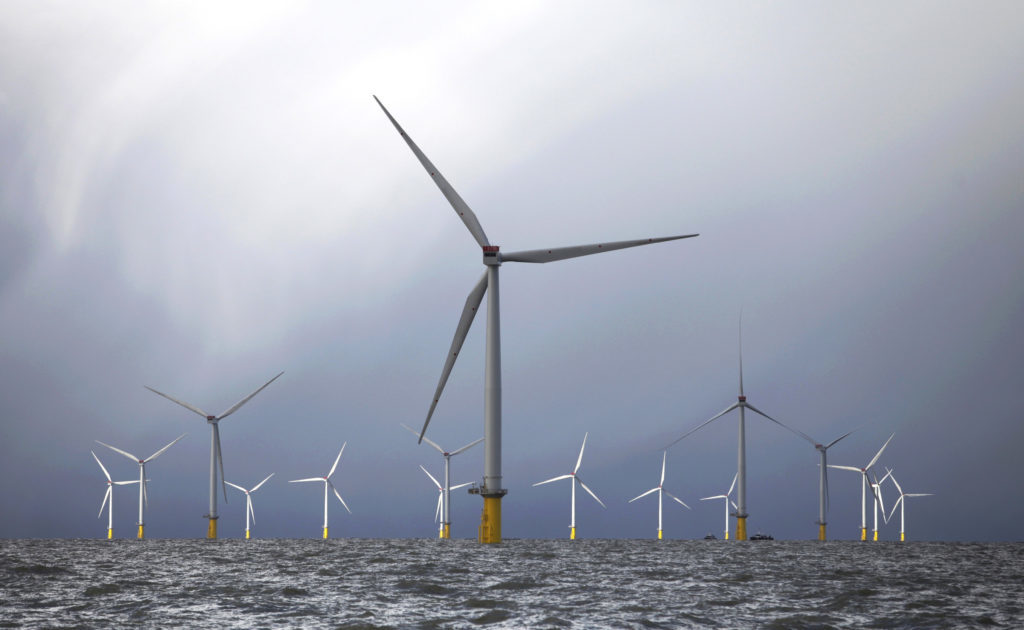
This week, the long-awaited COP26 conference finally got under way, bringing together world leaders to confront the challenge of climate change. But its outcomes, its ability to move the needle forward, is what matters to global citizens.
It is through concrete, targeted and bold actions that leaders will show their commitment to the future of humanity. It needs commitments that capture the public imagination and a Renewable Energy Silk Road could be one such vision.
In 1877, the German geographer, Ferdinand von Richthofen, coined the term “Silk Road” to describe the commercial exchanges between the Sino-Roman Empires.
Far beyond the simple exchange of goods, these cultural, religious, and culinary exports helped to propel society out of the Middle Ages and into the Renaissance – shaping the world as we now know it.
A similar approach to climate action is needed today.
Without question, trade has enabled our civilisation to progress. Concepts such as diversity, inclusion, human rights and environmental sustainability are now a critical part of our socioeconomic and political evolution, ones that inspire us to avoid settling for good enough, when it is possible to live better.
Unfortunately, in the last few decades, most economically advanced countries have been hostage to greed, expansionism, and environmental degradation in the name of “development”. Our over-reliance on fossil fuels has been at the heart of how we live, work, and play for so long that we have passed the fundamental tipping point.
According to the scientists, many of the Earth’s ‘vital signs’ have deteriorated, as seen in deforestation, greenhouse gas emissions and glacier thickness.
Cross-border
The consequences of our emissions-happy approach are becoming all too apparent. Now, more than ever, we need a spirit of collaboration that goes beyond lofty promises made at international meetings.
One such example of this should be the establishment of a Renewable Energy Silk Road’. I don’t just mean in the metaphorical sense, with countries and companies sharing best practice.
I mean in the very real, physical sense of building cross-border connectivity across Europe, the Middle East and into Africa to enable countries to import and export cleaner, greener power. A concerted effort to realise such a bold vision is the kind of grand thinking required to turn the dial against climate change.
Crucial to making such a vision a reality has been commitment from key fossil fuel beneficiaries in the Arabian Gulf to significantly ramp up renewables.
The Middle East must be a key node on the ‘renewable energy silk road’, with the region’s sun and resources having the potential to generate and export power along a modern recasting of famous ancient trade routes.
Climate change is clearly something the petrostates of the Arab world realise they can no longer ignore. The United Arab Emirates recently announced a net zero goal for 2050, with their Saudi neighbours making the same commitment for 2060.
The former also made a major play to host COP28 in Abu Dhabi.
Elsewhere, Iraq’s President has recently described climate change action as both a survival necessity and economic opportunity for his country. As the narrative takes hold that COP26 will fail to achieve hoped for action, it seems to have at least triggered a spurt of proactivity from these erstwhile oil producers.
It won’t just be the huge potential the region has for green power that makes a Renewables Silk Road viable.
Funding shared
Their ability to fund projects elsewhere will also be key. For example, BMW have switched to aluminium made using solar power generated just south of Dubai.
Elsewhere, offshore wind farms at Walney Extension and London Array, generate clean energy for 1.1m homes between them, backed by Masdar funding. These demonstrate the second part of a Renewables Silk Road, namely the sharing of resources to reduce emissions up and down supply chains.
A climate-committed Middle East is also essential to bringing the benefits of a Renewable Energy Silk Road to the African continent.
It must be the way station to bringing cleaner, efficient power to Africa in a way that aids sustainable, economic development.
It will also allow the wealthier, industrialised nations of Europe to support climate justice through greater provision of clean, green energy. European aid is currently fixated on building in-country capacity.
However, expanding cross-border connectivity could be an alternative, equally sustainable means of getting more, greener power to those that need it.
We must embrace this push toward a Renewable Energy Silk Road across Europe, Middle East and Africa, whilst recognising that building cross-border connectivity is an innovative, efficient means of growing global renewables capacity.

